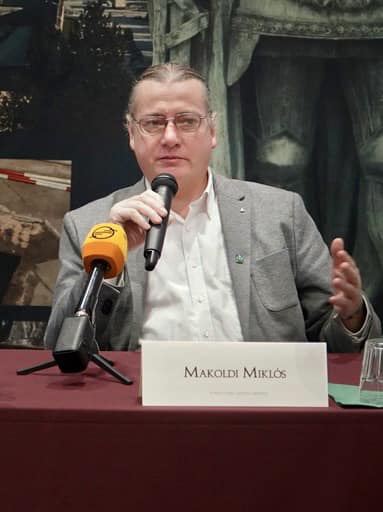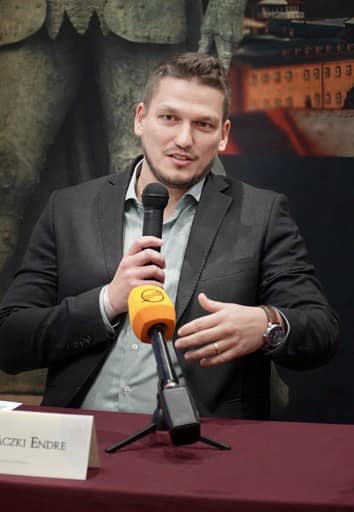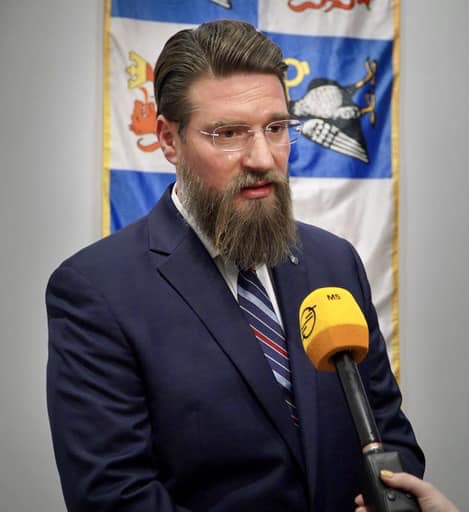The origin of the Hunyadi family
The Hunyadis have the highest genetic similarity with samples from the Carpathian Basin, with an ancient European genome composition. This is a new scientific milestone achieved by a remarkable research of the Institute of Hungarian Research, carried out under extraordinary circumstances.
Prof. Dr Miklós Kásler, Honorary President of our Institute, highlighted at the press conference: "We developed and launched our research on Hungarian historical dynasties in 2014 together with my colleagues. The Institute of Hungarian Research, founded in 2019 with the support of the Hungarian government, will continue this research based on a detailed programme. In 2020, I had the opportunity, as Minister, to initiate an archaeogenetic study of the Hunyadi House, in the framework of which discussions were held with the Bishop of Varaždin. Thanks to the successful negotiations, the opening of the Lepoglava tomb was also a success in terms of scientific diplomacy. The practical implementation of the research started in Lepoglava, Croatia, at the beginning of 2021," said our Honorary President, summing up the course of the research.

Miklós Zsombor Makoldi said about the archaeological excavation in Lepoglava: it was known from historical sources and from the carved marble tombstone with inscriptions and the figure of a knight found at the site that János Corvin and his son Kristóf Corvin were laid to rest in the sanctuary of the church of the Pauline monastery founded and built by János Corvin in Lepoglava. In Lepoglava because King Mátyás appointed his biological son János as Ban of Croatia, Slavonia and king of Bosnia while he was still alive.
Lepoglava is a fortunate historical site, as its surroundings avoided the Turkish ravages of the 15th and 17th centuries - thus the monastery and its tombs remained intact until the 20th century, when the building was unfortunately converted into a prison, but thank God the church was not much affected. It is therefore possible that a considerable amount of the Corvin tombs, and even of the original 15th century architectural elements and paintwork of the church, have been preserved despite the Baroque rebuilding of the church in the 18th century.
The location of the Corvin tomb was therefore known - it was located in front of the high altar, in the sanctuary of the church. Although the original tomb cover was removed in the early 19th century and incorporated into the northern sanctuary wall of the church, the tomb was re-covered with a marble slab of the same size, marked with dates, and it was probably never disturbed. Later, during the 19th century, the tomb was re-opened and anthropological examinations of the bones were carried out under the direction of Aurél Török.
The director of our Research Centre for Archaeology recalled that when the Institute of Hungarian Research and the Croatian Office for Cultural Heritage jointly opened the tomb on 14 January 2021, it was discovered that the original brick-lined and brick-floored tomb contained a small wooden coffin holding a relic, with the carved inscription Corvinus Iohannes and Corvinus Christoforus. After documenting the position of the coffin with photographs and drawings, the lid was removed to reveal a multitude of bones in no anatomical order, which appeared to belong to the skeletons of an adult and a child. The position of the bones was also documented and then anthropological and archaeogenetic analyses of the bones were carried out.
After these analyses, the bones were returned to the coffin in a similar arrangement, and the coffin lid was replaced. The tomb was then re-consecrated by the Pauline Fathers and finally, with the help of stone restorers, the marble tomb lid was put back in place - thus the original state was restored.

Dr Endre Neparáczki, Director of the Research Centre for Archaeogenetics, presented the details at the press conference: the researchers used a sampling technique with minimal damage in the church in Lepoglava, under extreme conditions. Using this technique, they took samples from the skull remains of János Corvin and Kristóf Corvin.
The bone samples were taken to the sterile archaeogenetics laboratory, where the DNA was successfully extracted. These were prepared for next-generation sequencing and then the complete hereditary sequence of the once-lived individuals was read. Their analysis revealed that the individuals were first-degree relatives, so the father-son relationship was proven. Further analysis identified the male haplotype group E1b1b1a1b1a6a1c~, typical of the Hunyadi House. Genome analyses indicated that the Corvins had an ancient European genome composition.

World-class research, carried out under extraordinary circumstances by the Institute of Hungarian Research - stated Gábor Horváth-Lugossy, Director General of our Institute, who thanked and highlighted the unique expertise and proficiency of his colleagues in answering the questions of the reporter of M5.
Our Director General detailed the implementation phase of the research, which started with the opening and sampling of the graves between 14 and 15 January 2021, the successful DNA extraction in April 2021, the scientific publication in August 2021 and the publication in the Helyion journal on 14 November 2022.
Gábor Horváth-Lugossy reminded: we are talking about a period when the Covid epidemic was raging, 24-hour negative PCR tests were required, and a total of three days were available in the church, because on Sunday there was a holy mass. The grave opening had to be planned in advance, a sterile lab had to be set up on site, and all this in 4 degrees Celsius while it was snowing outside. Less than two years after the sampling, the Institute of Hungarian Research, supported by a scientific publication, determined and presented the DNA (complete genome) of the Hunyadi family.

This is the highest scientific standard in the world today, and we are aware of it," concluded the Director-General.